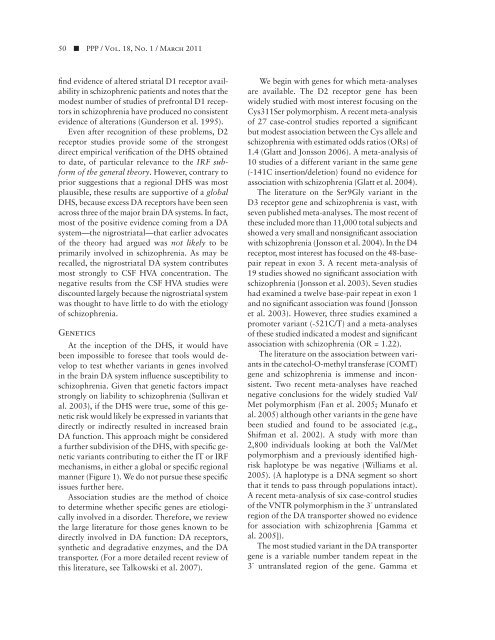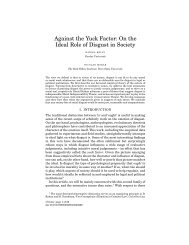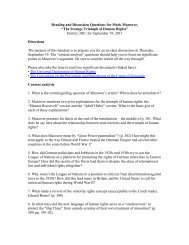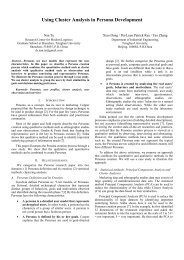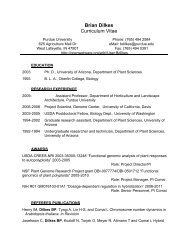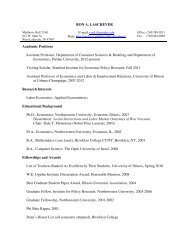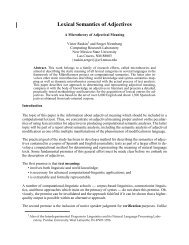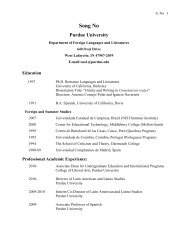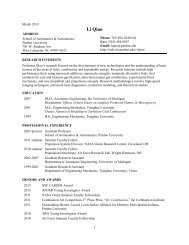The Dopamine Hypothesis of Schizophrenia: An Historical and ...
The Dopamine Hypothesis of Schizophrenia: An Historical and ...
The Dopamine Hypothesis of Schizophrenia: An Historical and ...
Create successful ePaper yourself
Turn your PDF publications into a flip-book with our unique Google optimized e-Paper software.
50 ■ PPP / Vol. 18, No. 1 / March 2011<br />
find evidence <strong>of</strong> altered striatal D1 receptor availability<br />
in schizophrenic patients <strong>and</strong> notes that the<br />
modest number <strong>of</strong> studies <strong>of</strong> prefrontal D1 receptors<br />
in schizophrenia have produced no consistent<br />
evidence <strong>of</strong> alterations (Gunderson et al. 1995).<br />
Even after recognition <strong>of</strong> these problems, D2<br />
receptor studies provide some <strong>of</strong> the strongest<br />
direct empirical verification <strong>of</strong> the DHS obtained<br />
to date, <strong>of</strong> particular relevance to the IRF subform<br />
<strong>of</strong> the general theory. However, contrary to<br />
prior suggestions that a regional DHS was most<br />
plausible, these results are supportive <strong>of</strong> a global<br />
DHS, because excess DA receptors have been seen<br />
across three <strong>of</strong> the major brain DA systems. In fact,<br />
most <strong>of</strong> the positive evidence coming from a DA<br />
system—the nigrostriatal—that earlier advocates<br />
<strong>of</strong> the theory had argued was not likely to be<br />
primarily involved in schizophrenia. As may be<br />
recalled, the nigrostriatal DA system contributes<br />
most strongly to CSF HVA concentration. <strong>The</strong><br />
negative results from the CSF HVA studies were<br />
discounted largely because the nigrostriatal system<br />
was thought to have little to do with the etiology<br />
<strong>of</strong> schizophrenia.<br />
Genetics<br />
At the inception <strong>of</strong> the DHS, it would have<br />
been impossible to foresee that tools would develop<br />
to test whether variants in genes involved<br />
in the brain DA system influence susceptibility to<br />
schizophrenia. Given that genetic factors impact<br />
strongly on liability to schizophrenia (Sullivan et<br />
al. 2003), if the DHS were true, some <strong>of</strong> this genetic<br />
risk would likely be expressed in variants that<br />
directly or indirectly resulted in increased brain<br />
DA function. This approach might be considered<br />
a further subdivision <strong>of</strong> the DHS, with specific genetic<br />
variants contributing to either the IT or IRF<br />
mechanisms, in either a global or specific regional<br />
manner (Figure 1). We do not pursue these specific<br />
issues further here.<br />
Association studies are the method <strong>of</strong> choice<br />
to determine whether specific genes are etiologically<br />
involved in a disorder. <strong>The</strong>refore, we review<br />
the large literature for those genes known to be<br />
directly involved in DA function: DA receptors,<br />
synthetic <strong>and</strong> degradative enzymes, <strong>and</strong> the DA<br />
transporter. (For a more detailed recent review <strong>of</strong><br />
this literature, see Talkowski et al. 2007).<br />
We begin with genes for which meta-analyses<br />
are available. <strong>The</strong> D2 receptor gene has been<br />
widely studied with most interest focusing on the<br />
Cys311Ser polymorphism. A recent meta-analysis<br />
<strong>of</strong> 27 case-control studies reported a significant<br />
but modest association between the Cys allele <strong>and</strong><br />
schizophrenia with estimated odds ratios (ORs) <strong>of</strong><br />
1.4 (Glatt <strong>and</strong> Jonsson 2006). A meta-analysis <strong>of</strong><br />
10 studies <strong>of</strong> a different variant in the same gene<br />
(-141C insertion/deletion) found no evidence for<br />
association with schizophrenia (Glatt et al. 2004).<br />
<strong>The</strong> literature on the Ser9Gly variant in the<br />
D3 receptor gene <strong>and</strong> schizophrenia is vast, with<br />
seven published meta-analyses. <strong>The</strong> most recent <strong>of</strong><br />
these included more than 11,000 total subjects <strong>and</strong><br />
showed a very small <strong>and</strong> nonsignificant association<br />
with schizophrenia (Jonsson et al. 2004). In the D4<br />
receptor, most interest has focused on the 48-basepair<br />
repeat in exon 3. A recent meta-analysis <strong>of</strong><br />
19 studies showed no significant association with<br />
schizophrenia (Jonsson et al. 2003). Seven studies<br />
had examined a twelve base-pair repeat in exon 1<br />
<strong>and</strong> no significant association was found (Jonsson<br />
et al. 2003). However, three studies examined a<br />
promoter variant (-521C/T) <strong>and</strong> a meta-analyses<br />
<strong>of</strong> these studied indicated a modest <strong>and</strong> significant<br />
association with schizophrenia (OR = 1.22).<br />
<strong>The</strong> literature on the association between variants<br />
in the catechol-O-methyl transferase (COMT)<br />
gene <strong>and</strong> schizophrenia is immense <strong>and</strong> inconsistent.<br />
Two recent meta-analyses have reached<br />
negative conclusions for the widely studied Val/<br />
Met polymorphism (Fan et al. 2005; Munafo et<br />
al. 2005) although other variants in the gene have<br />
been studied <strong>and</strong> found to be associated (e.g.,<br />
Shifman et al. 2002). A study with more than<br />
2,800 individuals looking at both the Val/Met<br />
polymorphism <strong>and</strong> a previously identified highrisk<br />
haplotype be was negative (Williams et al.<br />
2005). (A haplotype is a DNA segment so short<br />
that it tends to pass through populations intact).<br />
A recent meta-analysis <strong>of</strong> six case-control studies<br />
<strong>of</strong> the VNTR polymorphism in the 3´ untranslated<br />
region <strong>of</strong> the DA transporter showed no evidence<br />
for association with schizophrenia [Gamma et<br />
al. 2005]).<br />
<strong>The</strong> most studied variant in the DA transporter<br />
gene is a variable number t<strong>and</strong>em repeat in the<br />
3´ untranslated region <strong>of</strong> the gene. Gamma et


